Intersection of Past and Present
Starting off October 3rd at the Fredericksburg Visitors Center, our tour guide made a statement that I have scribbled down in my notebook, “The lay of the land is important so generations to come can better understand” and next to this I wrote, “Whitman would like this!”
So, I thought I would focus on this statement and how we, as a class, began to appreciate the nature and physical space that Whitman so eloquently describes throughout Leaves of Grass. We first stopped in front of the map of the Battle of Fredericksburg. Now although I can not stand to look at maps and am the most directionally challenged individual, I tried my best to really understand and look at the map in order to better understand what Whitman saw when he was here in Fredericksburg.
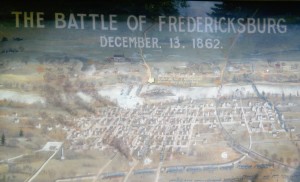
Fredericksburg Battlefield map
Continuing down the winding dirt road trail on Sunken road, the intersection between past and present began to take place. On the exact grounds where we were standing, hundreds of Union soldiers marched, hid, drilled, and died. Although these soldiers are gone, the grass itself still remains. I can read and listen to the facts about the Civil War, but until I actually walked on the land that the fighting took place, saw the bullets on the Innis house, and leaned against the stone wall that stood as a barrier between the Union and Confederate soldiers, I could not grasp what the Civil War actually was.
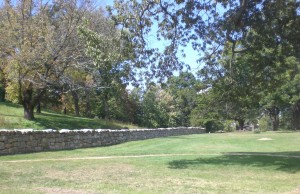
The Sunken Road path and stone wall
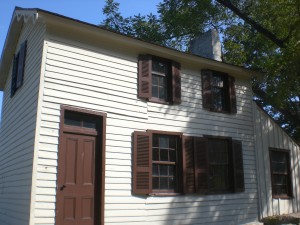
The Innis House
At the Chatham house, when I saw the preserved graffiti that a wounded soldier had etched into the wooden walls, the images that Whitman wrote about throughout his war journals came alive. The Chatham house itself was a physical reminder of the Civil War past.
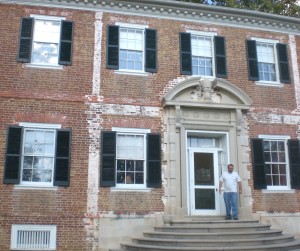
The Chatham House
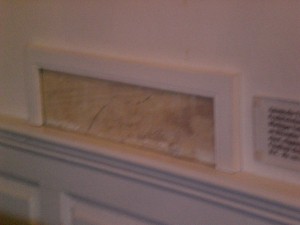
Graffiti etched into the wall by a Civil War soldier
In the photograph of the Chatham House you can see the ghost columns that supported the old porch are clearly visible. This physical change demonstrates the impact and change that the Civil War had over all aspects of life, even the change in architecture.
Walking down Sunken road and standing on the grass overlooking Fredericksburg at Chatham, it is easy to see that our tour guide’s statement is true. In order for us to better understand what occurred throughout history, we can not merely read about it in the books. Rather, one must go out, observe, and experience the physical locations of historical events. I think Whitman would have been proud of us for beginning the journey of understanding and appreciating nature and the land around us.
No Comments »
No comments yet.
RSS feed for comments on this post. TrackBack URI
Leave a comment
Line and paragraph breaks automatic, e-mail address never displayed, HTML allowed: <a href="" title=""> <abbr title=""> <acronym title=""> <b> <blockquote cite=""> <cite> <code> <del datetime=""> <em> <i> <q cite=""> <s> <strike> <strong>